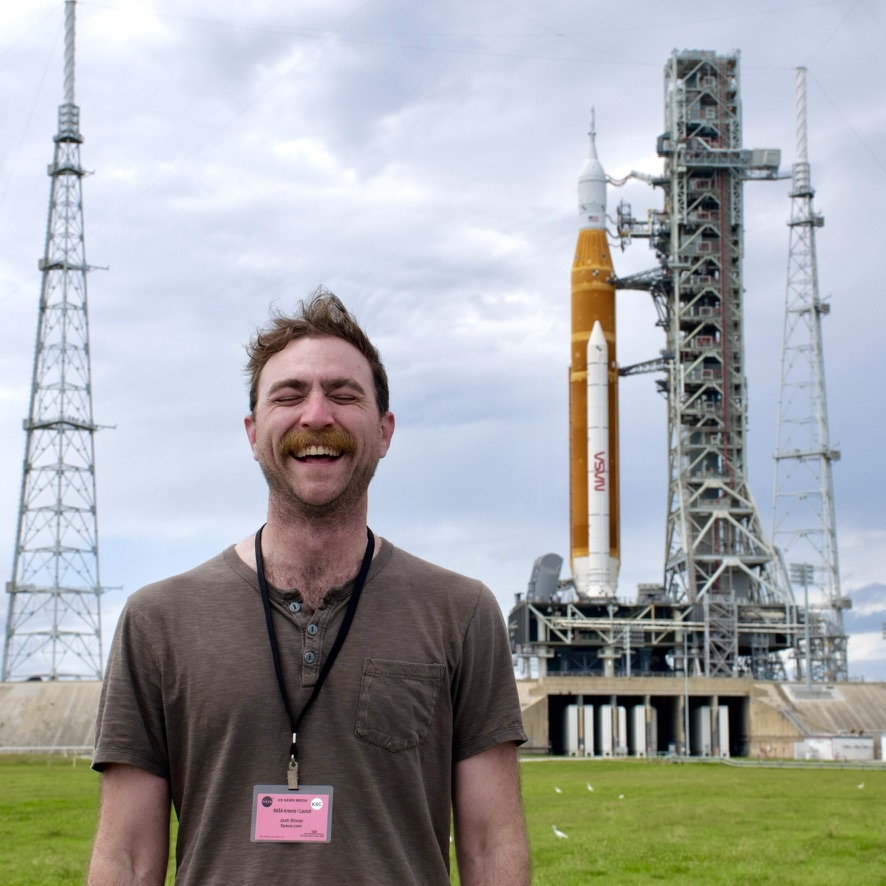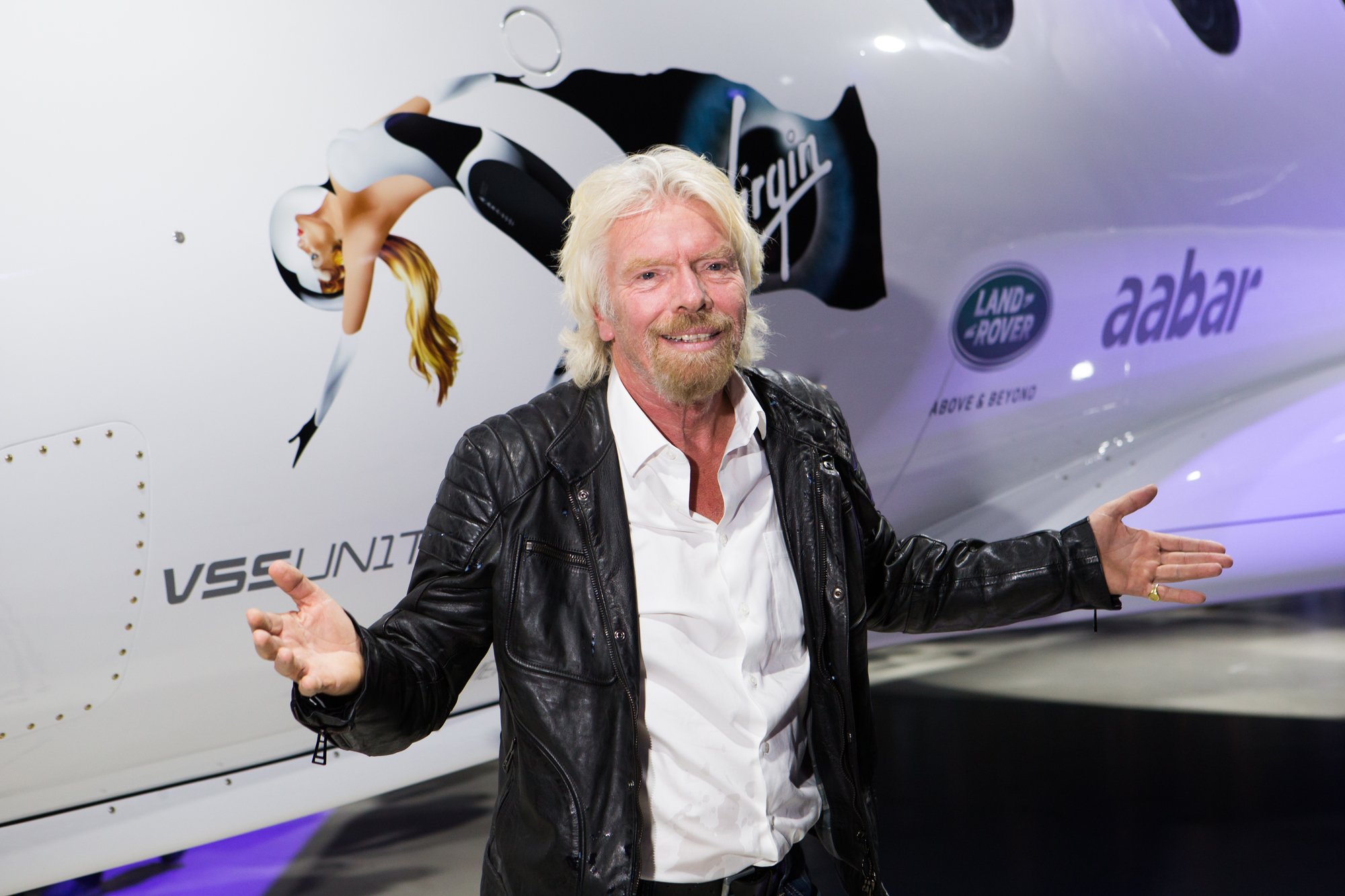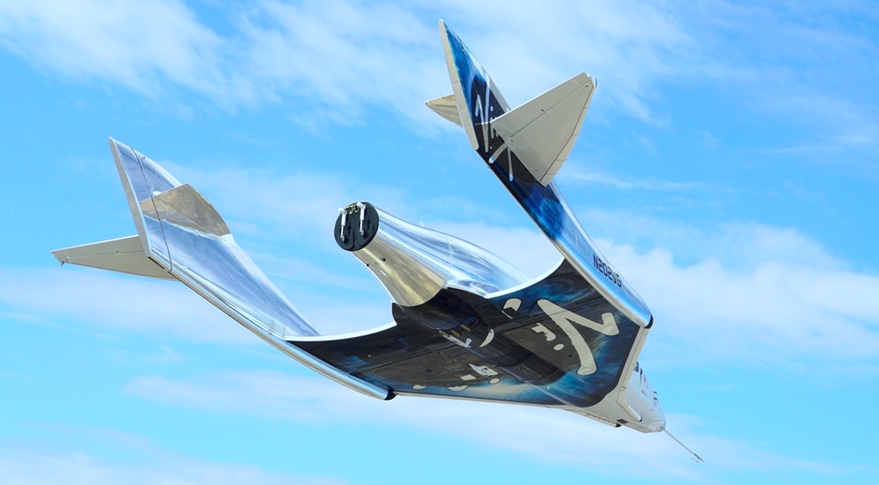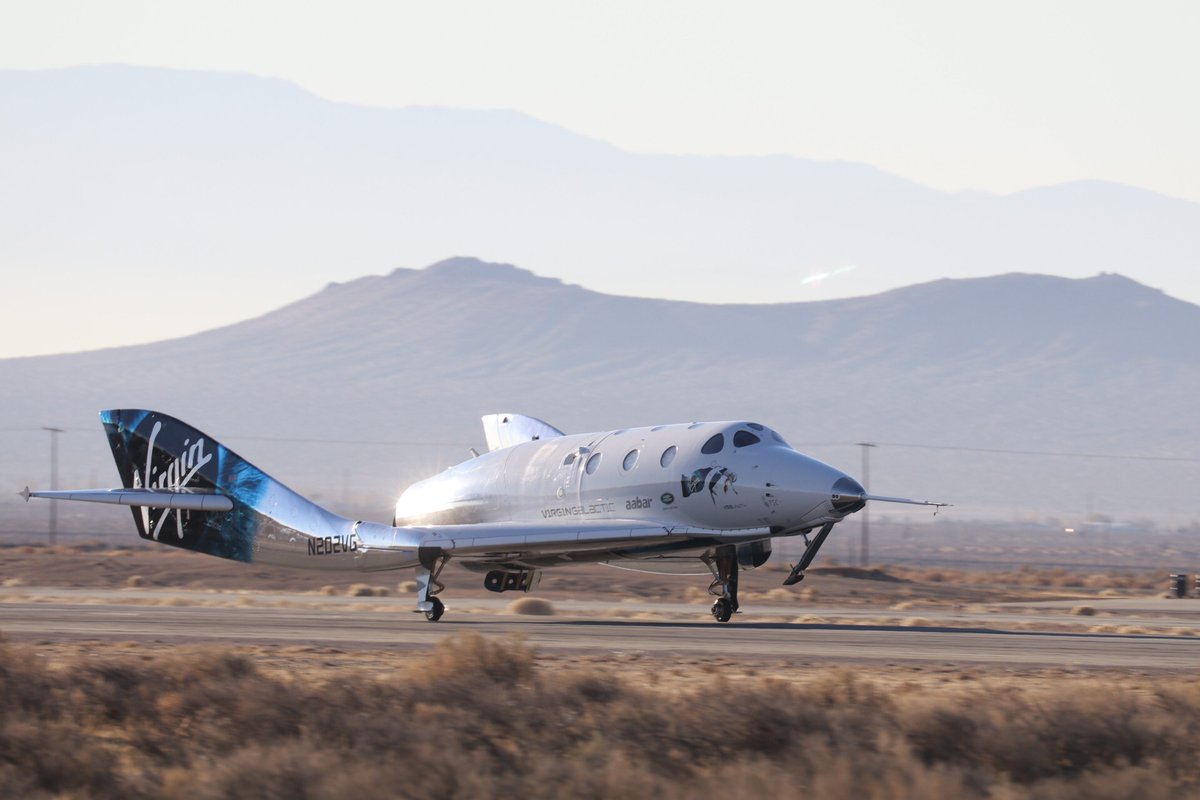Who is Virgin Galactic and what do they do?
Virgin Galactic is offering suborbital flights to anyone with pockets deep enough to buy a seat, and there is a lengthy waitlist.

Virgin Galactic is a private space tourism company founded by billionaire businessman Richard Branson in 2004.
Branson registered the Virgin Galactic business name in 1999, and it is included in over 50 Branson-owned companies that carry the Virgin brand, not least of which has included an airline, hotel chain and cellphone service provider.
The Ansari X Prize competition at the turn of the millennium brought Virgin Galactic into the spotlight after Branson backed the winning SpaceShipOne designed by Burt Rutan and his company Scaled Composites.
The X Prize offered $10 million to the first non-government organization to launch two consecutive crewed spaceflights in as many weeks on a reusable vehicle, and SpaceShipOne took the purse with flights between September and October 2004. That same year, Virgin Galactic began advertising flights to space beginning at $200k, per seat, on an updated version of SpaceShipOne, SpaceShipTwo, to be manufactured by Scaled Composites for commercial use.
Related: Do space tourists really understand the risk they're taking?
How much is a Virgin Galactic flight?
In 2004, Virgin Galactic began advertising flights to space beginning at $200k, per seat, on an updated version of SpaceShipOne, SpaceShipTwo, to be manufactured by Scaled Composites for commercial use.
Now, that ticket price sits at $450k, and as of May 2023, Virgin Galactic has yet to fly any customers, though that may not remain the case much longer. After nearly twenty years and a waitlist of more than 700 people, the company finally appears on a trajectory to cross a few eager would-be astronauts' names off the list — and "astronauts," in this case, is a bit of a contentious term, for some.
Breaking space news, the latest updates on rocket launches, skywatching events and more!
Talk of spaceflight and vehicle reusability these days normally conjures images of capsules parachuting through the clouds, or SpaceX Falcon 9 boosters rocketing back to Earth to land and launch again.
Sierra Nevada's Dream Chaser spaceplane shares some similarities with Scaled Composites' SpaceShip line, such as its winged design and aerodynamic flight return, but the technique used by SpaceShipOne and Virgin's subsequent spaceplane models to reach space is unique amongst its contemporary rivals, though not entirely novel.
Virgin Galactic plane
For its three crewed flights to space (including a June 2004 test flight ahead of the two X Prize launches), SpaceShipOne took off from a conventional runway attached to a single-cabin carrier aircraft called WhiteKnight.
At around 50,000 feet (15,000 meters), WhiteKnight releases SpaceShipOne, which drops to ignite its engine and fly the rest of the way to space. That is, space according to some.
SpaceShipOne and SpaceShipTwo are both designed to fly sub-orbitally. Meaning that, while they are able to reach an altitude high enough to be considered outer space, they don't travel fast enough to achieve orbit around the planet. Orbital velocity for low Earth orbit (LEO) is around 17,500 mph (28,000 kph), and suborbital flights aboard SpaceShips One and Two don't typically exceed Mach 3, or 2,225 mph (3,540 kph).
NASA and the U.S. Space and Air Forces recognize the line between outer space and planet Earth to be at an altitude of 50 miles (80 kilometers). However, the international space community maintains different standards. The rest of the world recognizes the Kármán line, as its known, as the border with space, which sits at 62 miles (100 kilometers) high. And thus, with a 12-mile difference between them, the debate over who has or hasn't been to space, and therefore who does or does not qualify as an "astronaut," persists.
SpaceShipOne's three flights each broke the Kármán line and left no question over the spacecraft's success. However, each of SpaceShipTwo's suborbital flights to date has only crossed the 50-mile mark.
It's high enough to see the curvature of the earth, and the utter blackness of space, and the length of the flights allows passengers several minutes to experience weightlessness.
A similar launch technique was implemented by NASA during America's first ventures to bridge the gaps of flight between Earth's atmosphere and outer space. The space agency developed the X-15 hypersonic plane in the 1950s, which was carried into the sky strapped to the wing of a Boeing B-52 Stratofortress aircraft, and then dropped for engine ignition at altitude, using the same principles Scaled Composites' SpaceShip design would use over a half-century later.
Eight of the twelve X-15 pilots earned astronaut wings, with some flights taking the aircraft up to 67 miles (108 kilometers) in altitude. So far, everyone who's flown with Virgin Galactic has received their astronaut wings, though a few are accompanied by an asterisk*.
Where does Virgin Galactic launch from?
In December 2005, Virgin Galactic struck a deal with the state of New Mexico to build a $225 million taxpayer-funded launch center known as Spaceport America, which serves as the company's headquarters. From there, Virgin Galactic launches its SpaceShipTwo missions, but they have been few and seldomly as the company and spacecraft struggled with development issues and unfortunately, fatal accidents that delayed SpaceShipTwo's debut for a number of years.
A 2007 explosion at the Mojave Air and Space Port, in California, during a SpaceShipTwo propellant flow test, killed three Scaled Composites' workers and injured three others. This halted spacecraft production to allow for an investigation, which ultimately found the company at fault.
Virgin Galactic plane development
Even without the spacecraft ready, WhiteKnightTwo, the redesigned carrier aircraft for SpaceShipTwo was unveiled and began test flights in December 2008. The ship was dubbed the "VMS Eve," and featured an extra-wide wingspan with dual fuselages and pilot cabins on opposite sides of the vessel's SpaceShipTwo ferry.
SpaceShipOne was designed for a crew of three. The upgraded SpaceShipTwo features room for a two-pilot cockpit, and a passenger cabin to seat up to six. Finally, in December 2009, a year after the reveal of the redesigned WhiteKnightTwo, and five years after the spacecraft's initial announcement, Virgin Galactic premiered the VSS Enterprise, the first of its SpaceShipTwo fleet.
The Enterprise performed its first atmospheric rocket-powered flight test in July 2010, spending over six hours in the air. Adjustments to the vessel and more delays put SpaceShipTwo's next test flight off until the Spring of 2013, with two more successful test flights to follow in September 2013 and January 2014.
However, a flight in October of that year ended in the destruction of the SpaceShipTwo VMS Enterprise, sustaining injuries to its pilot, and the tragic death of its co-pilot. Following an investigation, the National Transportation Safety Board ruled the cause of the crash as pilot error and faulted co-pilot Michael Alsbury for having deployed SpaceShipTwo's "feathering" re-entry system too early. The report also faults Scaled Composites for inadequate pilot training, stating the company, "did not ensure that the accident pilots and other SS2 test pilots adequately understood the risks of unlocking the feather early."
The incident grounded Virgin Galactic for two more years.
Virgin Galactic's next SpaceShipTwo vehicle from Scaled Composites was named VSS Unity and flew its first test flight in September 2016. SpaceShipTwo's first flight since the VSS Enterprise crash lasted nearly four hours and saw the spaceplane reach altitudes of 50,000 feet (15,000 meters). Three more powered test flights of VSS Unity's engine in April, May and July, 2018 each brought the craft higher and higher, until its flight at the end of the year when SpaceShipTwo reached a major milestone.
On December 18, 2018, VSS Unity made SpaceShipTwo's first suborbital flight, reaching an altitude of 51.4 miles (82.7 kilometers). In turn, the mission's pilot Mark Stucky received his astronaut wings.
VSS Unity's next four suborbital flight attempts were all flown by Virgin Galactic's Chief Pilot Dave Mackay. Of the four flights between February 2019 and July 2021, all but one were successfully flown past NASA's not-quite-Kármán line. A December 12, 2020 flight was aborted prior to SpaceShipTwo's engine ignition, and Mackay and co-pilot and veteran NASA astronaut Fred Sturckow were able to return in the vehicle safely.
Virgin Galactic founder Branson boarded VSS Unity himself for the spacecraft's fourth suborbital flight in July 2021, which also included Virgin Galactic employee test pilots and engineers. That flight was also a success but did not go over without incident. During flight, SpaceShipTwo deviated from its intended course, later triggering a short, but cumbersome investigation by the Federal Aviation Administration (FAA).
Virgin Galactic and Scaled Composites spent another year and a half making improvements to VSS Unity, all while manufacturing another SpaceShipTwo for its fleet. The new model, SpaceShip III, was revealed in March 2021, and named VSS Imagine.
VSS Unity flew again on May 25, 2023, ending another hiatus for the vehicle, and possibly ushering in a new era for Virgin Galactic and SpaceShipTwo. Unity's most recent flight saw another all-employee crew from Virgin Galactic aboard the spacecraft for a fifth successful suborbital flight.
Next Virgin Galactic flight
Now, the company is imminently poised to begin commercial operations in June 2023. "We think if all this goes well, we'll be ready to fly our first commercial flight in June," Virgin Galactic president of spaceline missions and safety Mike Moses told Space.com before the May 25 flight. That first mission will be a research mission for the Italian Air Force, Moses said.
After that, Virgin Galactic is striving for a once-a-month flight cadence, with the goal to increase that as time goes on.
Additional resources
Learn more about the space tourism company on Virgin Galactic's official website and explore their spacecraft fleet in more detail. Keep up to date with the latest Virgin Galactic news by following them on Twitter.
Bibliography
In-Flight Breakup During Test Flight Scaled Composites SpaceShipTwo, N339SS Near Koehn Dry Lake, California October 31, 2014. NTSB. https://www.ntsb.gov/investigations/AccidentReports/Reports/AAR1502.pdf
NASA. X-15 to the edge of Space Poster. NASA. https://www.nasa.gov/stem-ed-resources/X-15_Poster.html
Reserve your place in history. Virgin Galactic | Pricing. https://brochure.virgingalactic.com/pricing/
Sir. Richard Branson. Concordia. https://www.concordia.net/community/sir-richard-branson/
SpaceShipOne makes history: First private manned mission to space. Scaled composites: SpaceShipOne. https://web.archive.org/web/20101006112217/http://scaled.com/projects/tierone/spaceshipone_makes_history_first_private_manned_mission_to_space

Josh Dinner is the Staff Writer for Spaceflight at Space.com. He is a writer and photographer with a passion for science and space exploration, and has been working the space beat since 2016. Josh has covered the evolution of NASA's commercial spaceflight partnerships and crewed missions from the Space Coast, as well as NASA science missions and more. He also enjoys building 1:144-scale model rockets and human-flown spacecraft. Find some of Josh's launch photography on Instagram and his website, and follow him on X, where he mostly posts in haiku.



